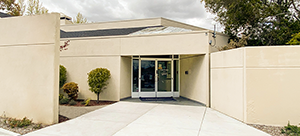In an earlier blog post, we discussed some ways in which you can manage chronic pain. This is such an important topic, however, that we felt a follow-up blog is appropriate.
Chronic pain is generally defined as pain that lasts 3-6 months longer than expected. Unfortunately, older adults tend to suffer from this kind of pain far more than younger adults. In fact, a recent study of older American adults found that 52.8% reported that they had experienced “bothersome pain” during the preceding month.

Understanding Chronic Pain
As an older adult, many factors, including the following, can contribute to your chronic pain:
- Underlying injury, either old or new
- Underlying disease or condition, such as arthritis, diabetes, COPD, cancer, etc.
- Poor circulation
- Spinal compression
- Failing organ(s)
- Damaged nerves
- Cancer treatments, such as chemotherapy, radiation, etc.
Whatever its cause, chronic pain can lead to such things as the following:
- Decreased mobility
- Sleep disturbances
- Loss of appetite
- Depression
- Stress
- Avoidance of normal activities
- Avoidance of normal family or social interactions
- Decrease in your overall quality of life
The most important thing to understand about chronic pain is that it is not a common side effect of getting older. Nor does reporting it to your doctor or other health care provider make you a complainer or a whiner. Do not hesitate to tell your doctor about it. Also, try to be as specific as possible regarding where and when you feel it and what it feels like, such as burning, aching, stabbing, “pins and needles,” dull, sharp, etc.
Treating Chronic Pain
Your doctor likely will want to give you a complete physical examination to try to determine what is causing your chronic pain before he or she recommends a course of treatment for managing it. He or she may also want to perform diagnostic tests such as x-rays, an MRI, a CT scan, etc. Keep in mind, however, that some chronic pain is idiopathic, meaning that it can arise from an unknown and undiagnosable cause.
Depending on the type and severity of pain you are experiencing, your doctor may recommend one or more of the following nonmedical courses of action:
- Low-impact exercise, such as biking, swimming, aerobic water exercises, etc.
- Relaxation techniques
- Music or aroma therapy
- Meditation
- Biofeedback
- Acupuncture
- Physical or occupational therapy
- Spiritual pursuits
- Distractions, such as watching television, talking with family or friends, etc.
Consult your doctor before taking oral pain medications, even over-the-counter ones, to relieve your chronic pain. Why? Because pain relievers may interact with other medications you already take. In addition, older adults react to medications differently than younger adults, which can result in unexpected side effects.
On the other hand, if you experience joint pain caused by arthritis, using an over-the-counter topical pain cream can bring you at least temporary relief.
If your doctor starts you on a pain medication regimen, be sure to follow it exactly. Take your medication only when prescribed and only in the prescribed dosage. If necessary, buy a pill organizer that features daily and morning/afternoon boxes in which to place your pills. This can be a big help in reminding you what pill or pills to take when.
All in all, chronic pain is not something that you should grit your teeth and put up with. At Elder Care Alliance, your health and welfare are our main concerns. Our team members are dedicated to helping you with chronic pain management so you can enjoy life to the fullest extent possible. We provide a variety of wellness programs that can help chronic pain sufferers and our Care Coordination Program can assist to arranging any treatments you may need.




















